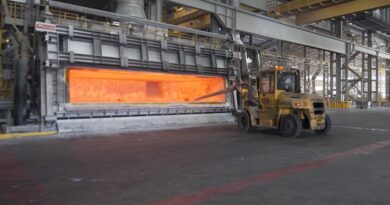Greater use of alumina refractories reduced demand for calcined bauxite
In the supply side of refractory bauxite, key highlights include continuing uncertainty about Chinese supply, existing Guyanese production expanding, new production from Guyana, Brazilian developments and Indian production with upgrading.
Greater use of high alumina refractories in recent years using tabular alumina, white fused alumina (WFA) and calcined alumina, have reduced demand for calcined bauxite and BFA (brown fused alumina).
Overall, supply from China remains uncertain, especially for higher grades, and logistics costs maybe expected to return to more normal levels possibly in 2022, but concerns about long supply chain are likely to remain.
Supply from Guyana seems likely to grow from both existing calcination plants and from raw washed bauxite exports with eventual local calcination. There is potential for further availability of refractory grades from Brazil, higher in iron but low in titanium and potentially greater use of local bauxites for refractories in India.
According to experts if recovery from the pandemic is strong, supply may struggle to meet demand in the short term, especially if there is a short term catch-up surge. Sintering trials have been completed in North America, China, India, Europe, Africa, and South America, while India is on verge of major conversion to fused bauxite (FBX).
In North America, an Alabama facility has developed two grades of Bonasika sintered bauxite and has the most converted customers, though logistics is the biggest issue for the refractory market in this region. The FBX bauxite is perhaps too good: “Low alkalis, low iron, high alumina and so on are great, but not when recipes have been re-designed to make lower grades.”
FBX plans to introduce selected blends to provide correct product for the correct application; studies are currently underway and “may involve” a new kiln facility, ideally 50-70 metres in length and using natural gas.
Guyana was now the world’s fastest growing oil producer and the high potential for a local source of cheap natural gas would certainly help any rotary kiln development.




